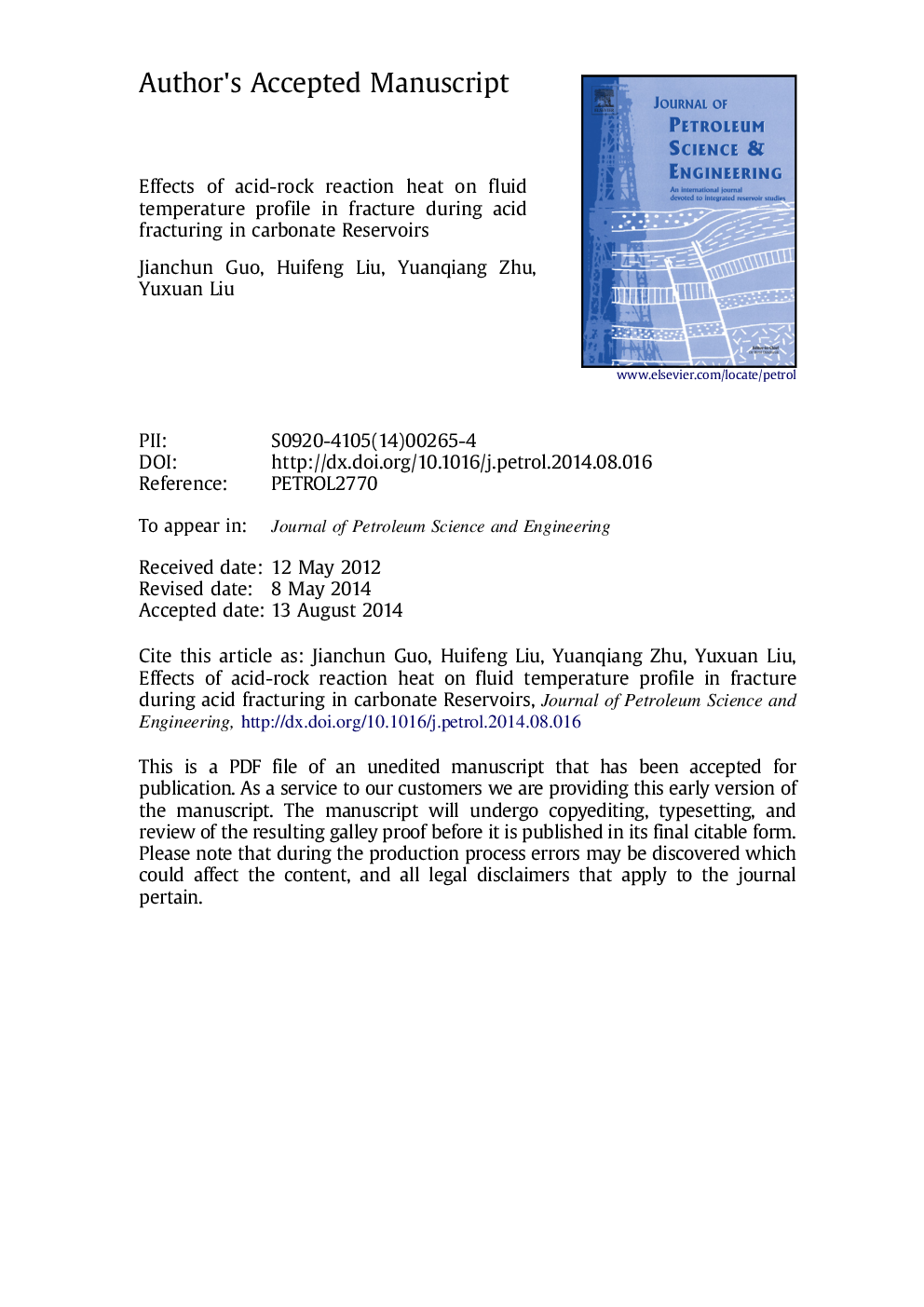| Article ID | Journal | Published Year | Pages | File Type |
|---|---|---|---|---|
| 8126770 | Journal of Petroleum Science and Engineering | 2014 | 28 Pages |
Abstract
During acid fracturing, the acid-rock reaction heat changes significantly with temperature, acid concentration and pressure. The variance of acid-rock reaction heat will change the temperature profile in the fracture, and consequently affect the effective fracture geometry created by the acid. With consideration of the effects of temperature, pressure and volumetric work of CO2 produced by reaction, a method coupling the acid-rock reaction heat with a 2-dimension model of the fluid temperature profile along a fracture has been studied to develop a model for calculating the fluid temperature profiles applicable for acid fracturing of carbonate reservoirs. The analysis results show that acid-rock reaction heat can cause a maximum temperature increase of about 15 °C to fracture fluid. It was further observed that the effect of acid-rock reaction heat on temperature profiles is more pronounced by using higher acid concentrations in low temperature formation. Our method shows the significance of including the acid-rock reaction heat in the fracture to achieve a more accurate calculation of the fracture temperature profile in acid fracturing wells.
Keywords
Related Topics
Physical Sciences and Engineering
Earth and Planetary Sciences
Economic Geology
Authors
Jianchun Guo, Huifeng Liu, Yuanqiang Zhu, Yuxuan Liu,
